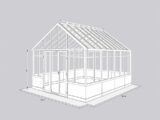what are the disadvantages of a polycarbonate greenhouse?
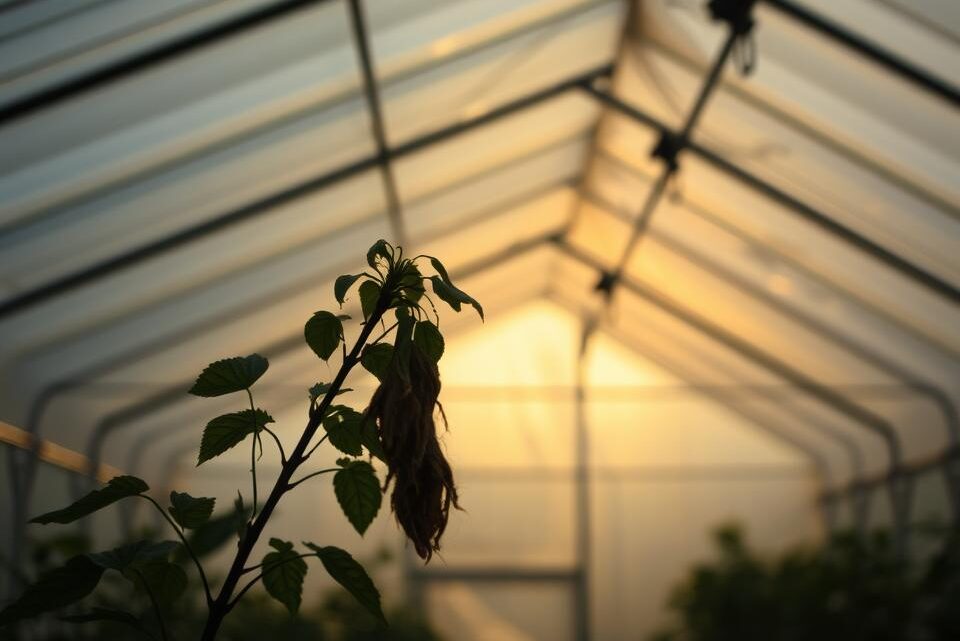
Polycarbonate greenhouses remain quite popular with those who seek a lighter option than glass. The panels provide strong impact resistance and help protect plants against harsh weather. Yet there are potential issues.
Owners sometimes notice surface scratches and feared discolouration over time. Some might find repairs or regular upkeep necessary. This guide examines key points surrounding polycarbonate greenhouse disadvantages to help British gardeners decide if this material meets their needs.
Inhaltsverzeichnis
Key Realisations
- Impact strength stands out compared to many alternatives
- Scratches and discolouration may affect clarity
- Long-term maintenance could become a factor
- Durability depends on installation and upkeep
- Weighing cost versus lifespan supports informed decisions
Understanding Polycarbonate Features
Polycarbonate stands out for its strong yet lightweight make-up. These panels offer generous protection against impacts and fit snugly into greenhouse frames. The distinctive design can regulate temperatures inside, but some gardeners are wary of the disadvantages of polycarbonate greenhouses. Clear sheets may lose a bit of transparency over time, so it is worth exploring the roots of that issue.
Composition and Structure
This material often appears as twin or multi-wall sheets, creating insulating air pockets inside each layer. That extra space reduces energy costs and helps plants grow under milder temperature swings. Plastic resins and stabilisers further strengthen the panels to endure gusty winds and changing seasons.
Pros and Cons at a Glance
Pros:
- Lightweight, making installation simpler
- Effective insulation for balanced interior climates
- Not easily shattered compared with glass
Cons:
- Potential drop in clarity over extended periods
- Higher chance of surface scuffs
- Risk of fading in direct sunlight
Proper upkeep can limit the disadvantages of polycarbonate greenhouses, extending their lifespan and preserving vital light for plant growth.
Durability Concerns
Polycarbonate is known for its resilience, yet panels can flex or bow when not properly reinforced. Strong winds or shifting frames place strain on connections, leading to possible stress fractures. Regular checks are wise in climates where storms threaten structural stability.
Proactive steps make a real difference. Greenhouse maintenance tips such as swift debris removal and careful inspection of bracket fittings help panels stay in top shape. Each season brings fresh challenges, from rain-soaked autumns to frosty winters. Aim to secure any loose components before they escalate into costly repairs.
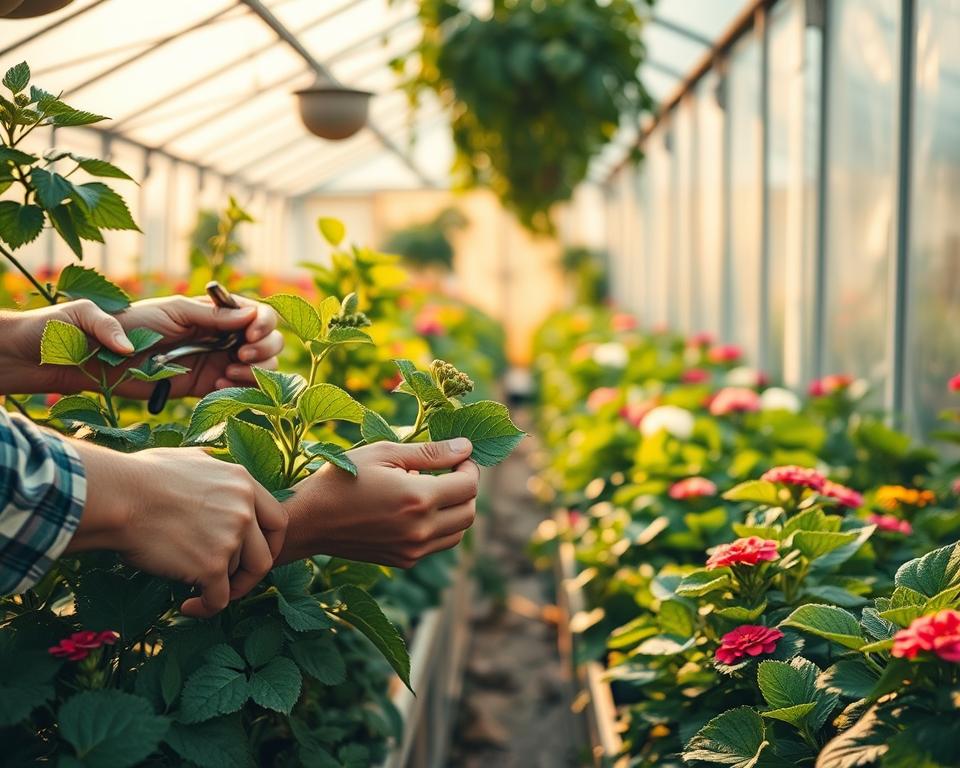
Consistent upkeep is key not only for preserving panel strength but also for safeguarding plants. Polishing dulled areas and rechecking seals slow wear and tear. A quick schedule detailing tasks each month ensures you spot damage early and handle it on time.
| Issue | Preventive Action |
|---|---|
| Panel Warping | Reinforce frames, tighten loose brackets |
| Cracking | Conduct routine checks, replace ageing panels |
| Moisture Build-up | Ventilate regularly, follow greenhouse maintenance tips |
What Are the Disadvantages of a Polycarbonate Greenhouse?
Gardeners appreciate transparent panels that protect seedlings. Yet unseen pitfalls can arise with polycarbonate designs. This material provides sturdy insulation, but scratches, sunlight exposure, and upkeep may cause frustration for newcomers and seasoned growers alike.
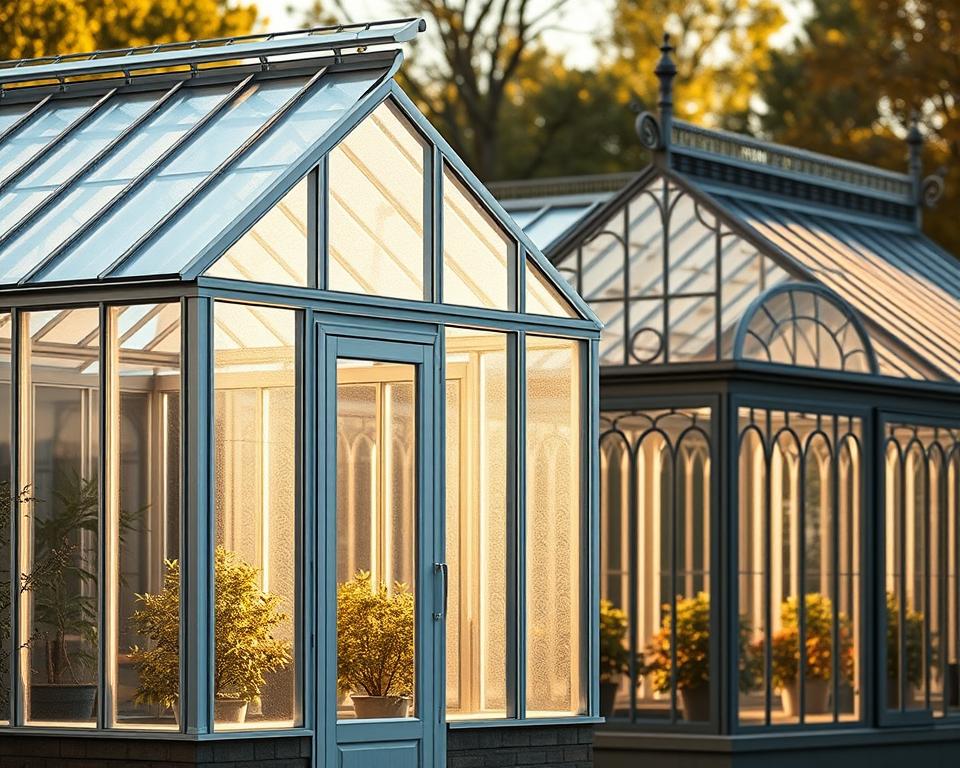
Susceptibility to Scratches
The outer layer can pick up marks from tools, strong winds, or flying debris. Scratches may become more visible in bright daylight, hindering overall clarity. Gentle cleaning methods and protective measures can reduce these blemishes.
UV Exposure and Discolouration
Direct sunlight can make certain panels lose their transparency or turn pale. Occasional washing and regular checks are vital to slow down fading. Lower-grade sheets without proper coatings are the most vulnerable.
Challenging Maintenance Requirements
Moisture, persistent dirt, and algae may linger within the channels of each panel. Routine scrubbing with mild detergents keeps growth conditions stable. Failing to stay on top of cleaning can hurt airflow and reduce light levels.
| Issue | Possible Impact |
|---|---|
| Scratches | Reduced clarity and overall appearance |
| UV Discolouration | Faded panels leading to diminished light |
| High Maintenance | Buildup of dirt, algae, and moisture |
Comparing Polycarbonate to Glass
Gardeners often weigh the benefits of each material by looking at cost, weight, and clarity. Glass, produced by brands like Pilkington, adds a classic appearance and strong light transmission. It may suit those seeking direct sunlight for delicate blooms. Yet its weight demands sturdy framing, and it might crack if subjected to strong impact.
Polycarbonate is lighter and frequently engineered with greenhouse UV protection, making it more resistant to breakage. It excels at diffusing light to avoid scorching vulnerable leaves. Some enthusiasts prefer a crisper look, so the slightly clouded finish can be a mild drawback. On the other hand, the ability to handle challenging weather conditions draws many towards this material. Ease of installation further appeals to beginners.
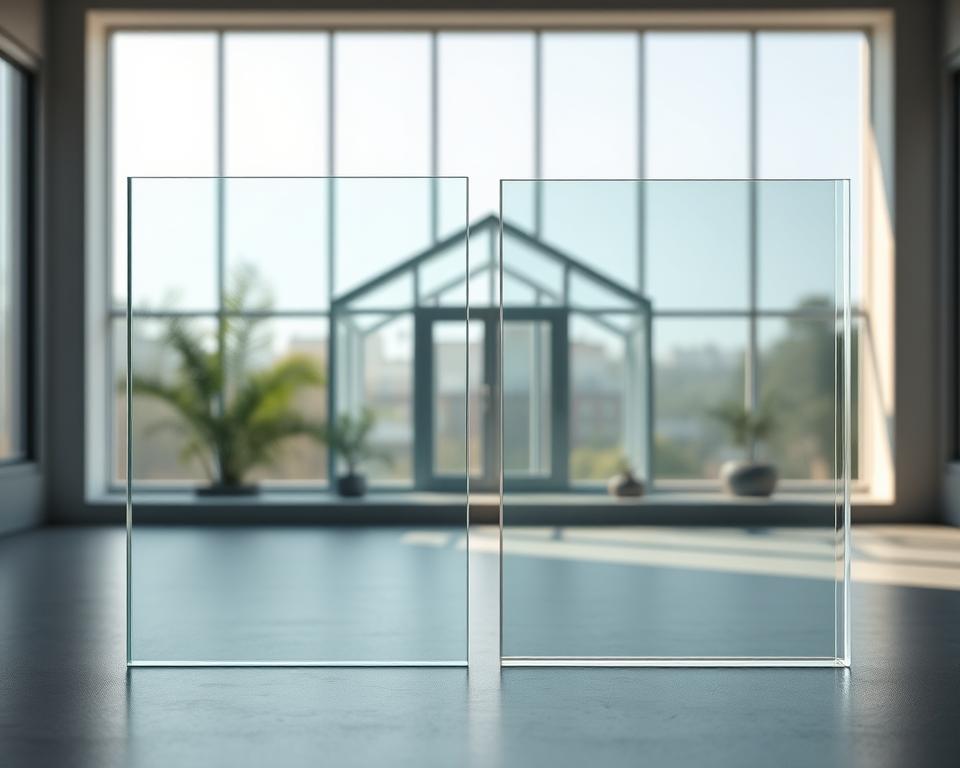
Choosing glass or polycarbonate depends on gardening goals and climate, since greenhouse UV protection may be essential in harsh conditions. Both serve different requirements.
Ways to Minimise Fogging and Condensation
Temperate climates can encourage high moisture buildup, which leads to fogging in greenhouse areas. Many growers face this challenge when warm air collides with cooler surfaces. Reducing humidity and boosting airflow keeps your plants healthy and your structure free of moisture clogs. Take active steps to maintain clear panels and balanced conditions.
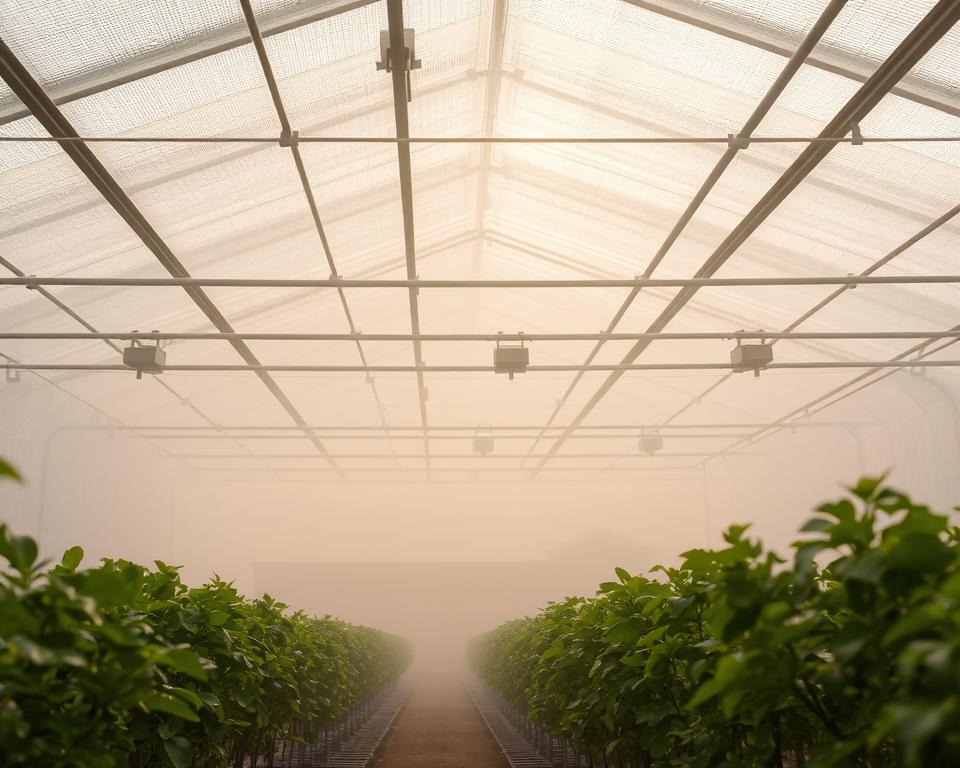
Effective Ventilation Methods
Opening roof vents or side vents on a timed schedule helps manage damp, stagnant air. Installing automated systems can adjust openings based on temperature changes. Fans encourage movement where natural breezes may fall short.
- Install roof vents to expel warm, moisture-laden air
- Consider side vents for improved crossflow
- Use circulation fans to keep condensation in check
Recommended Cleaning Practises
Dirt and grime can trap water droplets on polycarbonate panels. Mild detergents work well without damaging the surface. A soft brush helps remove algae, allowing light to flow freely and halting fogging in greenhouse spaces.
| Cleaning Agent | Benefit | Frequency |
|---|---|---|
| Gentle Detergent | Removes surface residue | Monthly |
| Water and White Vinegar | Dissolves persistent grime | Quarterly |
Managing Temperature Fluctuations
Greenhouse interiors can heat up fast on warm days and chill rapidly at night. Shading fabrics or curtains slow excess heat when the sun is intense. Insulation around the frame locks in warmth, cutting energy costs and reducing uncomfortable temperature drops.
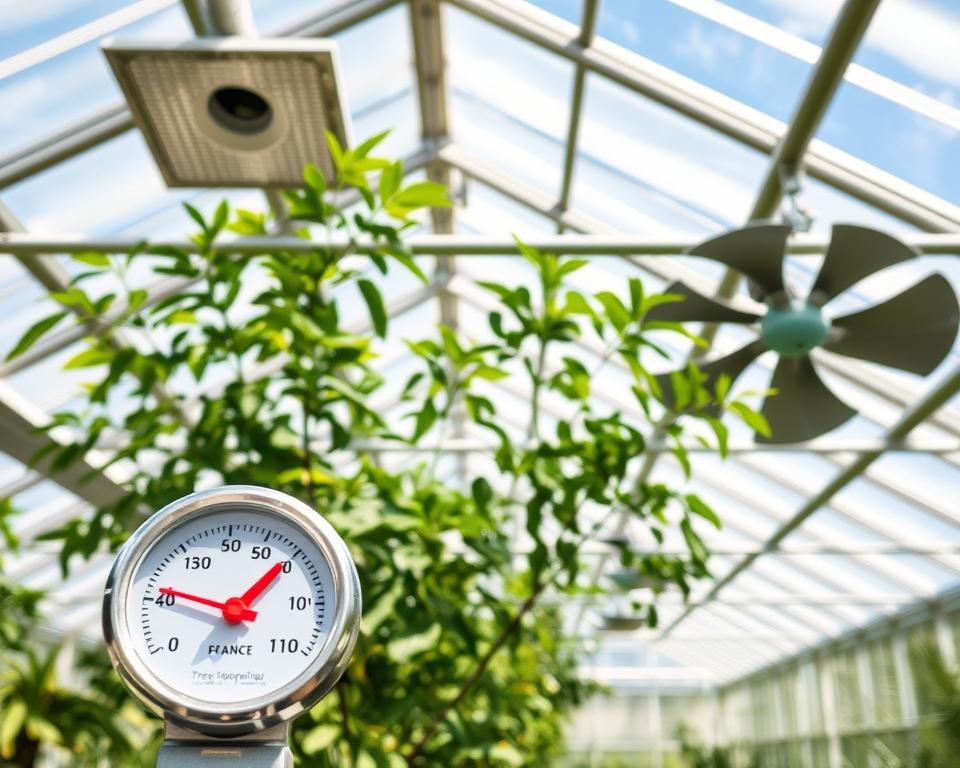
Water containers serve as thermal mass, absorbing daytime heat and releasing it later. That balance keeps plants healthier and less prone to stress. Reinforcing greenhouse panels secures every joint so that air gaps stay sealed, promoting steadier warmth.
- Check for loose edges along the roof and walls
- Use bubble wrap or similar linings in colder months
- Position vents in spots that allow proper airflow
Reinforcing greenhouse panels can prevent sudden drafts from sneaking inside, preserving stable conditions year-round. This detail often proves vital when weather patterns swing from frosty mornings to blazing midday heat.
| Method | Key Benefit | Consideration |
|---|---|---|
| Insulation Film | Retains Warmth | Check for Tears |
| Thermal Mass | Steady Heat Release | Spare Space Needed |
| Secure Panels | Less Heat Loss | Inspect Fasteners Regularly |
Practical Steps for Reinforcing Panels
Strengthening polycarbonate sheets plays a vital role in keeping your greenhouse sturdy. It helps protect against sudden gusts and persistent moisture. It is wise to focus on bracing methods that contribute to maintaining greenhouse temperature.
Choosing Reinforcement Materials
Aluminium rods or galvanised steel brackets from shops like B&Q bring lasting support to each corner. Metal pieces resist corrosion when exposed to rain, giving you a reliable frame for your greenhouse. Cross-braces in strategic spots keep panels from shifting out of place.
Installation and Securing Tips
Rustproof screws and rubber washers minimise gaps where water might seep in. A snug fit reduces stress on joints, which is key for maintaining greenhouse temperature. Weatherproof tape around edges keeps drafts at bay. Proper anchoring extends the life of each panel, especially when strong winds strike.
| Material | Key Advantage | Longevity |
|---|---|---|
| Aluminium Rod | Strong yet lightweight | 10+ years |
| Galvanised Steel Bracket | Resists corrosion | 15+ years |
Enhancing Light Transmission
Polycarbonate panels can scatter some light needed by seedlings and fruiting vines. Debris or algae build-up may further reduce clarity. A gentle wash with eco-friendly products, a soft brush, and a microfibre cloth helps maintain bright conditions. This routine protects surfaces from scratches while making it easier for plants to receive the necessary rays.
Efforts to improve light in greenhouse settings include painting nearby boundaries in reflective colours. Lighter shades bounce sunlight back into the structure, boosting overall brightness. Pruning overhanging branches near roof panels minimises shade and encourages healthier growth.
| Maintenance Step | Purpose |
|---|---|
| Gentle Washing | Keeps panels free from dust and algae |
| Pruning Branches | Prevents shadows from limiting light |
| Lighter Paint | Reflects additional sunlight into the greenhouse |
Conclusion
Polycarbonate greenhouses offer sturdy insulation when paired with mindful upkeep. Panels may scuff from daily wear or turn cloudy under strong sunlight. A simple way to avoid long-term damage is cleaning polycarbonate greenhouse surfaces at regular intervals. This habit helps remove dirt and prevents hazy build-up that could block essential light for seedlings and mature plants.
Good airflow stands as a key defence against fogging and wild temperature swings. Placing vents or fans near trouble spots supports healthy circulation. Reinforcing corners or edges with dependable clips can also lessen the chance of panels shifting or warping during storms.
Attentive planning, together with steady care, makes these greenhouses a winning choice for many British gardeners. Balancing their pros and cons takes only a bit of effort. A consistent focus on cleaning polycarbonate greenhouse panels keeps them in peak condition, allowing flowers, herbs, and vegetables to flourish year-round.
FAQ
Are polycarbonate greenhouses truly cost-effective compared to a traditional glass setup?
Yes, in many cases they are. Polycarbonate is a thermoplastic cladding that’s often less expensive to ship and install, offering good weather-resistance. However, while it may be budget-friendly initially, it’s important to factor in ongoing maintenance needs to ensure long-term cost-effectiveness.
How can I reduce the risk of fogging and condensation in a polycarbonate greenhouse?
Effective ventilation methods, such as ridge vents and automated openers, are key. Combine these with consistent cleaning practises—using mild soap and water—to clear any debris or algae that might trap moisture. These efforts help maintain healthier airflow and discourage the build-up of condensation inside the greenhouse.
What steps can I take to protect against UV degradation and potential discolouration?
Many polycarbonate panels include UV stabilisers. Still, providing shade when sunlight is at its strongest, cleaning panels regularly to remove dust, and checking for any damage that might allow excessive UV exposure are essential. Protective coatings can also help delay discolouration.
Are polycarbonate panels prone to scratches, and do they affect light infiltration?
Polycarbonate can be susceptible to surface scratches, which may gradually impact overall clarity. Using soft cloths or microfibre materials when cleaning, rather than abrasive brushes, can help preserve the panels and maintain better light infiltration.
Do polycarbonate greenhouses struggle with temperature fluctuations?
Despite offering good thermal insulation, polycarbonate greenhouses can still experience considerable changes in temperature. Sealing gaps, adding shading systems, and using insulation techniques—such as water barrels for thermal mass—all help regulate sudden temperature swings in British weather conditions.
How do I reinforce the structural integrity of a polycarbonate greenhouse?
Reinforcement involves choosing sturdy aluminium or galvanised steel frames, using cross-bracing for support, and ensuring panels are secured with proper fasteners. This approach prevents bending, minimises gaps where moisture can penetrate, and helps the greenhouse withstand strong winds.
Is it difficult to maintain cleanliness and clarity in polycarbonate panels?
It can require more diligence than glass, as algae, dust, and dirt may collect between the layers. Cleaning channels regularly with gentle detergents and rinsing with a hose keeps panels clear, aids light transmission, and prolongs the greenhouse’s lifespan.
How does polycarbonate compare to glass in terms of long-term durability?
Polycarbonate is exceptionally impact-resistant and lighter in weight, making handling and installation simpler. Glass, on the other hand, often has superior clarity but can be heavier and prone to shattering. While polycarbonate may show wear over time, regular upkeep can extend its longevity and maintain a healthier climate for your plants.
